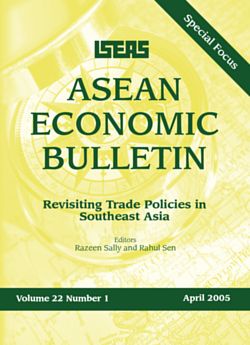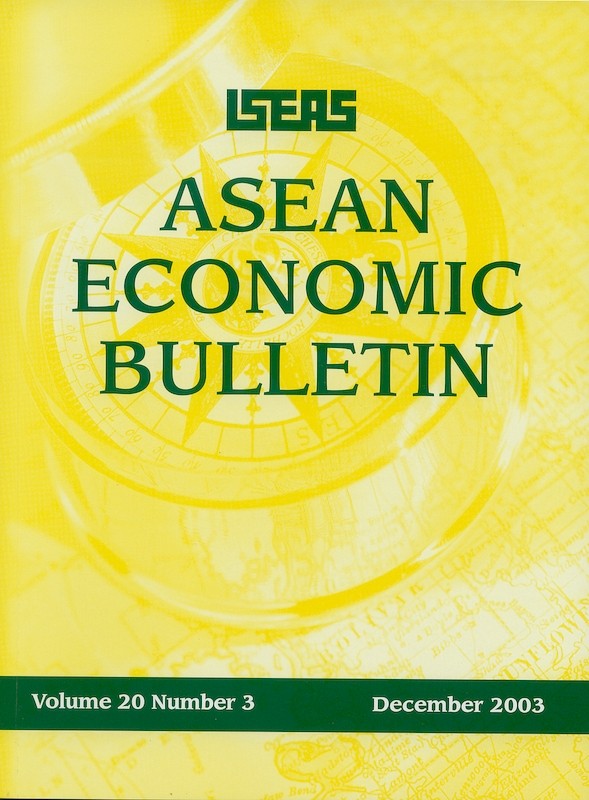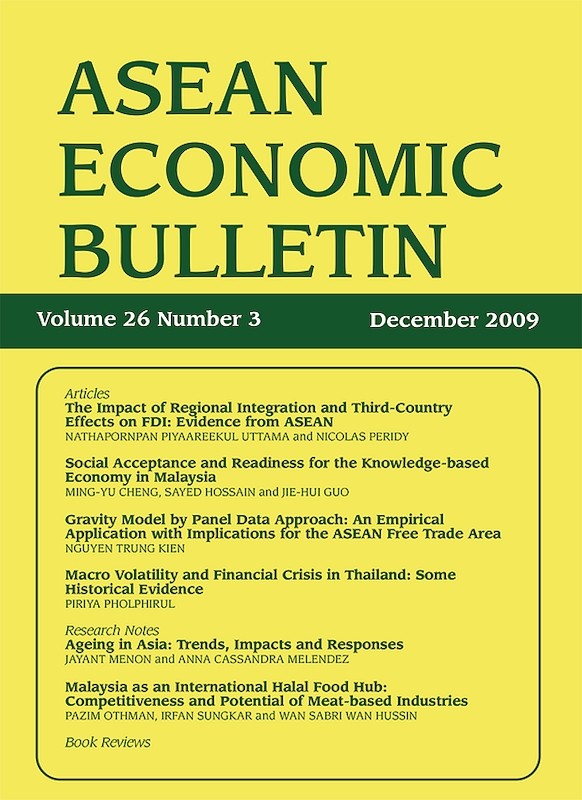ASEAN Economic Bulletin Vol. 25/2 (Aug 2008)

Date of publication:
August 2008
Number of pages:
136
Code:
AE25/2
Contents
-
ASEAN Economic Bulletin Vol. 25/2 (Aug 2008)
[Whole Publication] -
Preliminary pages
- ARTICLES
-
EAFTA or CEPEA: Which Way Forward?, by Masahiro Kawai, Ganeshan Wignaraja, authors see abstractThe spread of free trade agreements (FTAs) in East Asia amidst slow progress in the WTO Doha negotiations has stimulated a debate over the way forward. This paper examines the regions evolving trade architecture, characteristics of FTAs and welfare implications of alternative FTA scenarios. It suggests that consolidation of multiple and overlapping FTAs into a single East Asian FTA can help mitigate the harmful noodle bowl effects of different tariffs, rules of origin and standards. The paper also suggests that WTO-plus elements need to be further expanded and that consolidation into a Comprehensive Economic Partnership in East Asia at the ASEAN+6 level would yield the largest gains to East Asia among plausible regional trade agreements. As the next priority, the paper points to the formation of FTAs between East Asia, the United States and the EU as well as making FTAs more multilateral-friendly.
-
The Triad in Southeast Asia: What Determines U.S., EU and Japanese FDI within AFTA?, by Klimis Vogiatzoglou, author see abstractBy estimating three panel data models, the paper examines empirically the determinants of outward FDI of each Triad economy within the AFTA regional integration area over the 19952004 period. From the AFTA members' perspective, our econometric analysis provides information on the deterministic factors of inward FDI within AFTA originating from the United States, EU, and Japan. Our findings indicate that the FDI determinants and their relative importance differ to a considerable extent across the Triad. In general, however, international integration-related factors (such as the host country's degree of openness to the international economy and the importance of bilateral trade relations between the home and host country) as well as market-related factors (such as the host country's market size and the host country's degree of intra-AFTA market accessibility) are found to be the most important location determinants.
-
The Structure of Protection in Indonesian Manufacturing Sector, by Tri Widodo, author see abstractThis paper aims to analyse structure of protections in Indonesian manufacturing sector. Firstly, it describes the evolution of Indonesian industrial and trade policies. To some extent, Indonesian industrial and trade policies follow a statement of the supporters of liberalization: "good times mean bad policies and bad times mean good policies". Secondly, effective rate of protection analysis shows that Indonesian manufacturing sector has been liberalized more, especially after the 1997 economic crisis. The liberalization in manufacturing sector has also been encouraged by international/regional commitments such as the WTO, IMF, ASEAN Free Trade Agreement and other preferential trade agreements. Thirdly, Indonesian trade liberalization in the manufacturing sector was faster than that of Thailand and could catch up with Malaysian trade liberalization.
-
International Trade and Regional Income Convergence: The ASEAN-5 Evidence, by Kankesu Jayanthakumaran, Reetu Verma, authors see abstractThis paper demonstrates that multilateralism and regionalism are complementary, and that regional income convergence is likely with a like-minded and committed regionalism that often has links culturally and geographically. The association between international trade, income per capita, regional income convergence in ASEAN-5 is explored by applying the Lumsdaine and Papell approach that allows two endogenous structural breaks. The causal relationships between the above variables are also studied using Granger causality tests. The conclusion is that global (non-discriminatory multilateral) reforms have had a large impact on increasing trade. There is also a two-way causal relationship between the flow from trade to regional income convergence, and vice versa.
-
The Influence of Ownership Structure on the Corporate Performance of Malaysian Public Listed Companies, by Tee Chwee Ming, Chan Sok Gee, authors see abstractThe main objective of this study is to examine the impact of ownership structure on the corporate performance of the Malaysian public listed companies (PLC). Empirical evidence suggests that insider and institutional shareholding do not influence the corporate performance of the Malaysian PLC. The results seem to suggest that institutional shareholders have failed in their monitoring role and principal agent problem will not be solved by increasing the director's shareholding in the company. Despite segmenting the company according to market capitalization, results do not differ significantly. The relationship between corporate performance and insider and institutional shareholding is only significant in big market capitalization companies.
- RESEARCH NOTES
-
The Role of ASEAN Economic Community as a Commitment to Policy Certainty, by David Jay Green, author
-
Cambodia's Persistent Dollarization: Causes and Policy Options, by Jayant Menon, author
- BOOK REVIEWS
-
BOOK REVIEW: Colonial Legacies: Economic and Social Development in East and Southeast Asia, by Anne E. Booth, by Nur M Adhi Purwanto, author
-
BOOK REVIEW: Essays in Macroeconomic Policy: The Indonesian Experience, by Miranda S. Goeltom, by Jhon Tafbu Ritonga, author
-
BOOK REVIEW: ICT Infrastructure in Emerging Asia: Policy and Regulatory Roadblocks, edited by Rohan Samarajiva and Ayesha Zainudeen, by Francis E Hutchinson, author
-
BOOK REVIEW: The Elephant and the Dragon: The Rise of India and China and What it Means to All of Us, by Robyn Meredith, by Gracia Sierra, author




